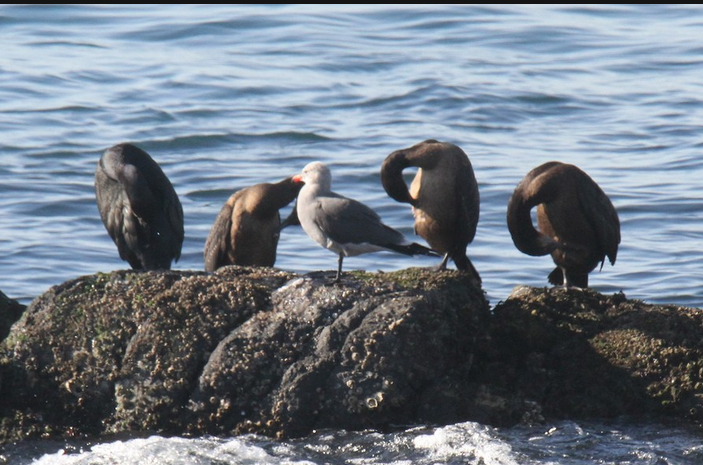 Daniel Donnecke has contributed his images and counts from a visit to race Rocks on October 30 to ebird.org
Daniel Donnecke has contributed his images and counts from a visit to race Rocks on October 30 to ebird.org
https://ebird.org/checklist/S61055064
 Daniel Donnecke has contributed his images and counts from a visit to race Rocks on October 30 to ebird.org
Daniel Donnecke has contributed his images and counts from a visit to race Rocks on October 30 to ebird.org
https://ebird.org/checklist/S61055064
Today was more of a fall day with cooler temperatures and a threat of rain in the air. Light levels were way down too. The barometer rose to 1014 hPA from a low of 1010 yesterday and it has just started to fall again. Rain and east winds of up to 25 knots are predicted to bring tomorrow’s forecasted rain, with a cool, wet outlook for the week ahead.
Thirteen visits to the protected area, by whale watching vessels, were observed today. Only one pleasure craft was noted.
There was a lot of cetacean action in and around Race Rocks for most of the day. It started with two big, bull, Biggs Killer Whales (Transients), travelling in from the west on the Rosedale side. They were later spotted in Race Passage and not long after an adult female Killer Whale was seen well inside the reserve by Turbine Rock. There were two Humpback Whales, one feeding just east of Race Rocks that moved west through Race Passage. It had a definite white splotch on the right fluke. The other one was feeding just west and had dark flukes, the same one, I think, that has been around for a while. There was also a Minke Whale feeding just to the south of Race Rocks.
Accumulated solar radiation levels today were less than half of what they have been for the last few days, 150 versus 300 to 350 Langleys and the days are getting noticeably shorter, faster now. Migrant species are moving through the reserve daily with hundreds of Surf Scoters moving through from west to east every day. All three species of cormorants are using the rocks here as roosts now and feeding in the multi-species flocks that surround the reserve with much commotion. This change into autumn not only impacts the biodiversity of the reserve but also has an impact on practical things like power generation.
Solar power has been producing over 90% of the power needed to run everything on the island and that amount will change over the next few months. Right now the shortfall is made up with a diesel generator but the plan is to move to cleaner burning propane in the near future. A great deal of progress has been made in reducing the amount of fuel stored and used here, from the days of the Coast Guard when there were six giant diesel tanks dominated the rock and the generators ran 24/7. A big shout goes out to Pearson College, for both reducing the ecological footprint in terms of CO2 and for reducing the risk of a spill.
It was another northeast day, with really not much happening weather wise. It blew NE about ten knots, was mostly overcast in the morning, with some sun in the afternoon. The barometer rose gradually all morning and then started to slowly slide after noon. It is expected that tomorrow’s southeast will bring rain, starting late tonight.
The whale watching boats were busy in the afternoon with Humpback Whales to the southeast of Race Rocks and more activity out to the west. A total of eight tour boats were seen in the Ecological Reserve.
Today was mega-fauna census day and these are the results:
Steller Sealion 298
California Sealion 508
Harbour Seal 79
Northern Elephant Seal 9
River Otter 2
Canada Goose 22
Greater White-fronted Goose 1
Harlequin Duck 5
Double-crested Cormorant 61
Pelagic Cormorant 15
Black Turnstone 9
Surfbird 5
Black Oystercatcher 38
Glaucous-winged Gull 145
Thayer’s Gull 1482
California Gull 3
Western Gull 7
Heermann’s Gull 35
Gull sp. 52
Common Murre 1
Common Raven 2
Fox Sparrow 2
Savannah Sparrow 15
Here are a couple of shots of Surfbirds, alone and with Black Turnstones.
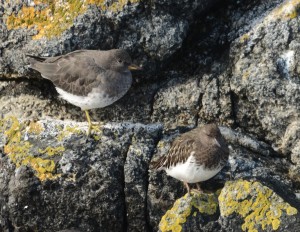
The census was challenging due to the numbers and species of gulls and the fact that both Steller Sealion and Harbour Seal numbers were lower than expected during the morning count, so they were re-counted in the early evening. I generally like to count Harbour Seals on the morning low tide but the tide wasn’t really doing much today. The evening counts were higher for both the Steller and the Harbour Seals. Two new Elephant Seals arrived today. They are both moulting, the smaller one hung out with the dual tagged three year-old, which appears to be staying on. The bigger animals may have gone back to Middle Rock as there were still six animals visible there.
Ring-necked animals as well as tagged and branded animals were also re-surveyed today. I am still working on the branding data from a month ago. Two of the ring-necked Steller Sealions that have been observed since August are still here and languishing as the plastic straps cut into the backs of their necks. I am putting out an appeal to the disentanglement crew again.
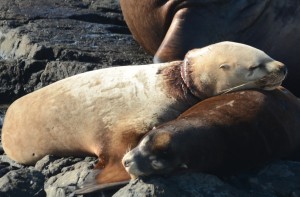
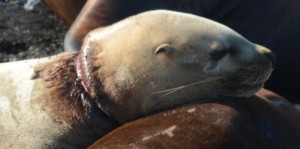
The second ring-necked animal ‘highlighted’ here is also branded on its’ left side 946R. I believe that it was branded at its’ natal colony which from the R should be Rogue Reef in southern Oregon. From the number it was branded after 2009 but I will find out more.
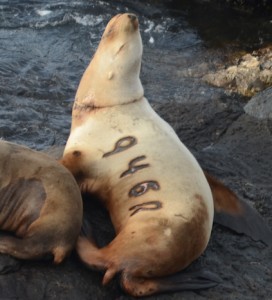
If it is not lying on its’ left side this ring-necked Steller’s Sealion is easy to tell apart from the others.
Did not do much maintenance today other than the basic cleaning, making water with the desalinator and electricity with the generator.
The day started with a hazy, overcast sky and an ocean swell rolling in from the open Pacific. Although visibility was 10 to 15 nautical miles, the marine air gave everything a soft, muted look and both Port Angeles and Victoria looked further away than they actually are. In the morning, winds were light to gentle breezes starting in the southwest and swinging over to southeast. In the afternoon it shifted to north-northeast and became noticeably colder and wetter.
The ocean swell became dramatic by mid-afternoon, exploding over north rock and making a rolling break into the jetty bay, surging right over the jetty. Although the barometer was higher today than it has been all week, it is now slowly dropping and Monday ‘s forecast is for more clouds, wind and rain. Hmmm sounds like October.
Whale watching activity was fairly brisk today with seven boats in the Ecological Reserve. Everyone was fairly well behaved. Seaking Adventures was certainly giving a lot of throttle in the Reserve, crossing from Great Race over to North Rock but that may have been because he was bucking the tide. There were also a couple of sports-fishing boats passing through the Reserve in a hurry, Foghorn Charters was one of those two.
A large Humpback Whale passed through the Reserve westbound, late afternoon, there were no whale watching boats around.
A lot more gulls arrived with the cool wet weather and are roosting just about everywhere on Great Race now. I am curious what the numbers will be for this week’s census on Wednesday.
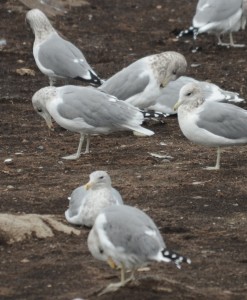 California Gulls resting and preening on Great Race.[/caption]
California Gulls resting and preening on Great Race.[/caption]
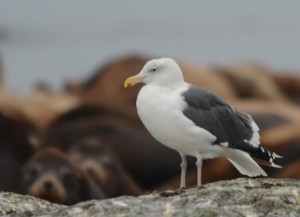
Western Gulls are a little north of their usual range here and hard to distinguish from Glaucous-winged X Western Gull hybrids.
With the influx of California Gulls it is going to be tricky distinguishing and counting all the large gulls. A gull that is easy to distinguish and also a favorite of mine, is the Heerman’s Gull.
Another avian visitor spotted today was the small to medium sized sandpiper pictured below, I think it is a Western Sandpiper but would like confirmation.
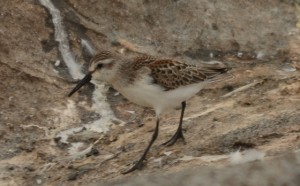
There were two young Elephant Seals on Great Race today and one of them was “tagged as a weiner in 2012” at Ano Nuevo Island in California “and hasn’t been seen since, so this is an important data point” according to Dr. Patrick Robinson, Año Nuevo Island Reserve Director.
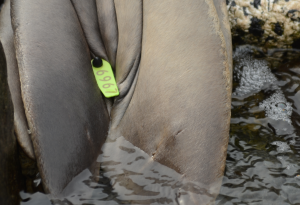
The second Elephant Seal was sleeping on the marine railway in the morning.
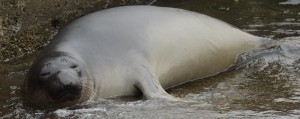
Race Rocks has become Canada’s main Elephant Seal colony. It is important as a fall haul-out location for sub-adults, as well as a winter birthing and mating site and spring moulting site.
Race Rocks is an ecological treasure located at a key location next to busy shipping lanes and popular sport-fishing grounds. I am thankful to those who had the vision to protect this amazing area and thankful to be able to experience it.
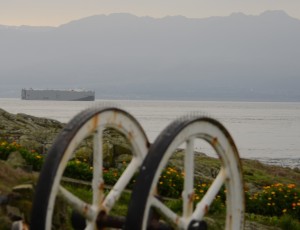
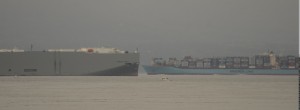
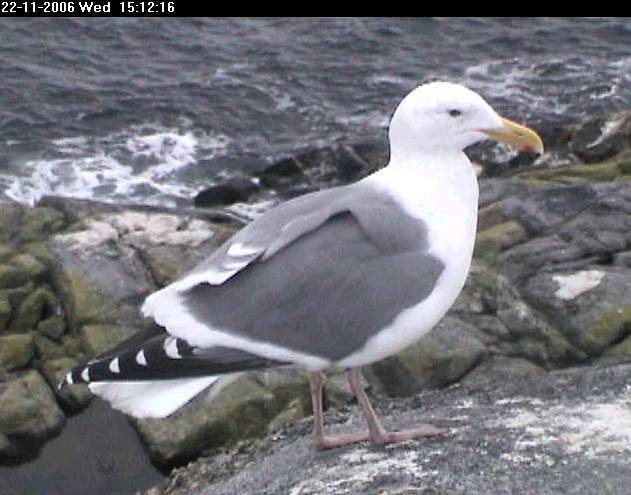 This image of a Western gull was taken by Pam Birley on the remote camera 5 on November 22 2006
This image of a Western gull was taken by Pam Birley on the remote camera 5 on November 22 2006
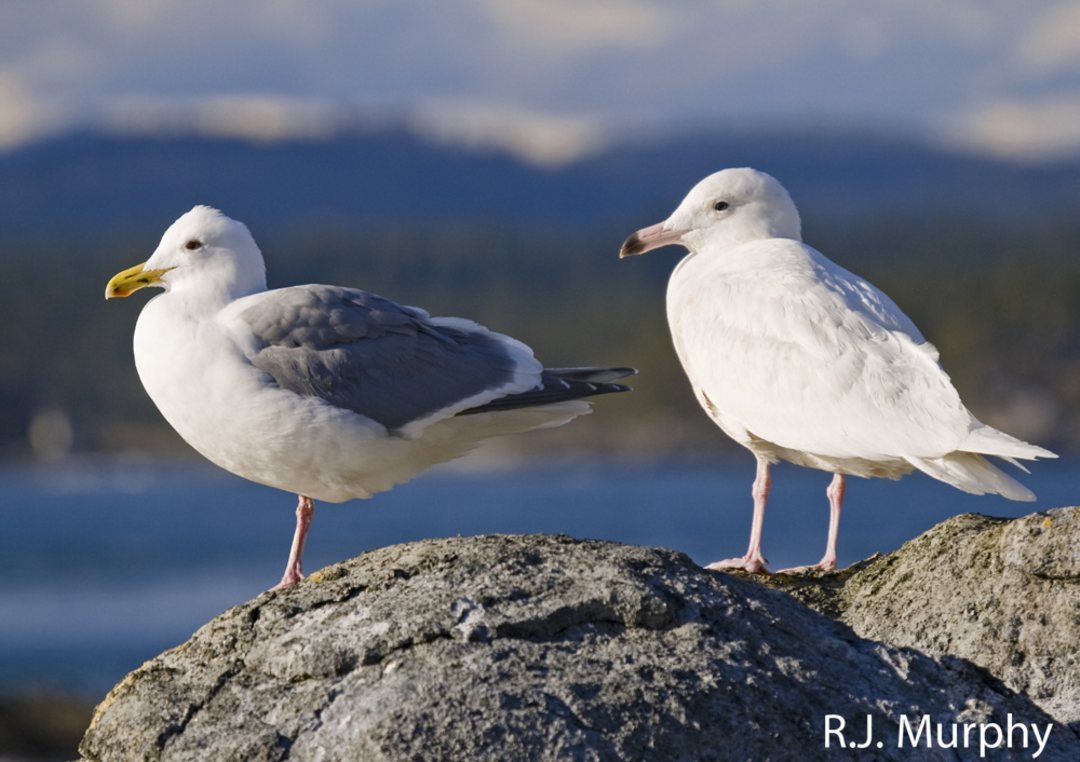 Western Gull on the left with the rare second year Glaucous Gull on the right. Photo March 8, 2009 by Ryan Murphy.
Western Gull on the left with the rare second year Glaucous Gull on the right. Photo March 8, 2009 by Ryan Murphy.
|
The series of pictures above were taken by Adam Harding in August 2009 show the first year winter plumage of the Western Gull.
Domain Eukarya
Kingdom Animalia
Phylum Chordata
Sub-Phylum Vertebrata
Class Aves
Order Charadriiformes
Family Laridae
Genus Larus
Species occidentalis
Common Name: WESTERN GULL
|
Other Members of the Class Aves at Race Rocks.
|
and Image File |
 The Race Rocks taxonomy is a collaborative venture originally started with the Biology and Environmental Systems students of Lester Pearson College UWC. It now also has contributions added by Faculty, Staff, Volunteers and Observers on the remote control webcams. March 8 2009- Ryan Murphy The Race Rocks taxonomy is a collaborative venture originally started with the Biology and Environmental Systems students of Lester Pearson College UWC. It now also has contributions added by Faculty, Staff, Volunteers and Observers on the remote control webcams. March 8 2009- Ryan Murphy |